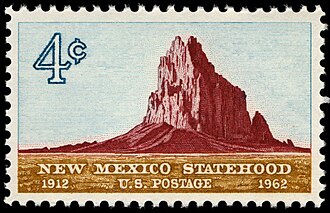
New Mexico’s history stretches back thousands of years, encompassing the cultural achievements of Indigenous peoples, the advent of Spanish exploration and settlement, transitions through Mexican and American governance, and the modern era’s scientific and economic developments. This unique blend of Pueblo, Hispanic, Mexican, and Anglo-American influences has forged New Mexico’s identity as a vibrant crossroads of the American Southwest.
Research your ancestors on MyHeritage
Prehistoric and Early Indigenous HistoryPrehistoric and Early Indigenous History
- c. 10,000 BCE – Earliest evidence of human activity in the region; Paleo-Indian peoples hunt megafauna and gather resources.
- c. 2000 BCE–400 CE – Archaic period transitions into the early Pueblo cultures; introduction of agriculture (corn, beans, squash).
- c. 700–1150 – Development of advanced Pueblo societies such as the Ancestral Puebloans (Anasazi); construction of impressive cliff dwellings in the Four Corners region.
- c. 1200–1300 – Major cultural shifts and migrations; many ancestral Pueblo sites are gradually abandoned due to climate changes and social factors.
Spanish Exploration and Colonial PeriodSpanish Exploration and Colonial Period
- 1539 – Friar Marcos de Niza, guided by Esteban the Moor, travels through parts of present-day New Mexico searching for the fabled Seven Cities of Gold.
- 1540–1542 – Francisco Vázquez de Coronado leads an expedition into the region, encountering various Pueblo communities and marking the earliest extensive Spanish exploration.
- 1598 – Don Juan de Oñate establishes the first permanent Spanish settlement at San Juan de los Caballeros (near present-day Española), claiming the region for Spain.
- 1609–1610 – Spanish authorities found Santa Fe, establishing it as the colonial seat of government and later the oldest capital city in the present-day United States.
- 1630s–1670s – Tensions mount between Spanish settlers and Pueblo peoples over forced labor, religious impositions, and resource pressures.
- 1680 – The Pueblo Revolt: Led by the Tewa leader Popé, Pueblo peoples unite to drive the Spanish out of New Mexico for over a decade.
- 1692 – Governor Diego de Vargas begins the Spanish reconquest of the territory, reestablishing control over Santa Fe and other settlements.
- 1700s – Colonization expands slowly; missionaries and settlers build missions and ranching communities, though native uprisings continue intermittently.
Mexican Rule and Transition to U.S. ControlMexican Rule and Transition to U.S. Control
- 1821 – Mexico gains independence from Spain; New Mexico becomes a remote northern province of the new Mexican nation.
- 1821–1846 – Santa Fe Trail becomes a critical trade route linking Missouri and New Mexico, boosting economic ties with the United States.
- 1837 – Chimayo Rebellion: Uprising in northern New Mexico challenges Mexican authorities over tax burdens and governance.
- 1846–1848 – Mexican–American War; the U.S. military occupies Santa Fe in 1846. The Treaty of Guadalupe Hidalgo (1848) officially transfers New Mexico to U.S. control.
Territorial PeriodTerritorial Period
- 1850 – The U.S. Congress organizes the Territory of New Mexico, encompassing a much larger area than the modern state.
- 1851–1860s – Conflicts with Indigenous groups (including Navajo, Apache, and Comanche) intensify as settlers push further into native lands.
- 1862 – Battle of Glorieta Pass (during the American Civil War) near Santa Fe halts a Confederate advance from Texas, ensuring Union control of New Mexico.
- 1863 – Creation of the Arizona Territory reduces the size of the New Mexico Territory.
- 1864 – Forced relocation of the Navajo, known as the “Long Walk,”[1] to Bosque Redondo at Fort Sumner; a pivotal and tragic moment in Navajo history.
- 1878 – Lincoln County War: Violent conflicts over economic and political control in southeastern New Mexico; figures like Billy the Kid become infamous.
Path to Statehood and Early 20th CenturyPath to Statehood and Early 20th Century
- 1880 – Completion of the Atchison, Topeka & Santa Fe Railway to Albuquerque spurs economic growth and greater connections with eastern markets.
- 1886 – Geronimo’s surrender effectively ends most major Native resistance in the Southwest.
- 1890s – Continued debate over statehood; political divisions, prejudice from Eastern politicians, and local concerns delay the process.
- 1912 – New Mexico is admitted as the 47th state of the Union on January 6.
20th Century to Modern Era20th Century to Modern Era
- 1912–1930s – Agriculture, ranching, and mining fuel the early state economy; tourism begins to grow, particularly around Santa Fe’s cultural heritage.
- 1916 – Pancho Villa’s raid on Columbus, New Mexico, prompts U.S. military presence in the border region.
- 1930s – Great Depression-era programs (including the New Deal) lead to infrastructure improvements and cultural documentation (e.g., WPA projects).
- 1942–1945 – World War II mobilization and the establishment of military bases; Japanese internment camps appear in some parts of the state.
- 1945 – The Trinity Test near Alamogordo marks the first detonation of an atomic bomb, signaling New Mexico’s key role in the Manhattan Project.
- 1950s–1960s – Growth of scientific and technological industries tied to Los Alamos National Laboratory, Sandia National Laboratories, and White Sands Missile Range.
- 1974 – The Indian Self-Determination and Education Assistance Act helps empower Pueblo, Navajo, and Apache communities with greater autonomy.
- 1980s–1990s – Continued expansion of high-technology and research sectors, along with a rising film industry presence.
References
- ↑ The Long Walk. National Museum of the American Indian

